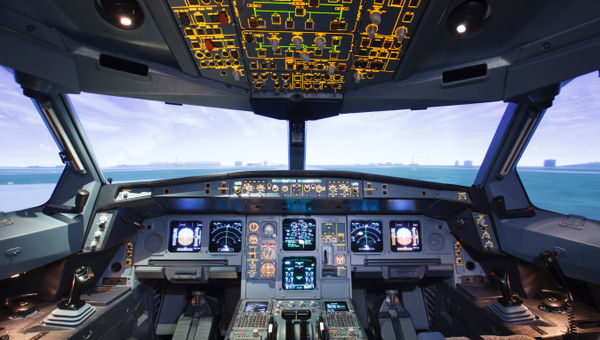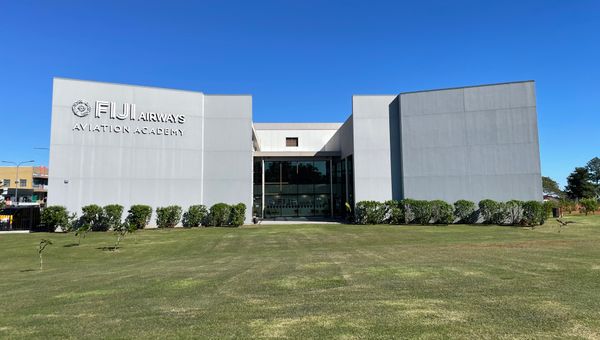Effective pilot recruitment and training are crucial for the success of the airline industry. But just how important is the topic for travel advisors — especially today, when there’s a shortage of pilots?
It’s very important, since the aviation industry’s ability to recruit and train pilots directly affects travel advisors’ ability to meet the demand of their clients to travel efficiently and economically to their destinations.
The current pilot shortage has roots in a variety of factors, including early retirements, a surge in air travel demand and post-pandemic recovery. Management consulting firm Oliver Wyman predicts that by 2032, the gap between global pilot demand and supply will be a whopping 80,000. That’s more than enough reason for concern on the part of travel advisors — and also a good reason why they should be taking note of the airlines that are making efforts to combat the shortfall.
“If you think about every 10 pilots that we’re short, it’s one aircraft that can’t fly,” said Dan Akins, an aviation economist and partner at Flightpath Economics. “It’s either parked, or not purchased or not leased. The effect that I see right now is that there is a capacity constraint on the industry that’s based primarily on the inability to source enough pilots to expand capacity to the degree that demand warrants, or that the airlines want to supply. What ends up happening is that you have fewer destinations, fewer operations — and the operations that actually exist to those destinations are pricier, because there’s more demand than the supply can handle.”
Jason Block, CEO of WorldVia Travel Group, agrees. “Shortages of qualified and trained pilots directly influence the efficiency and reliability of the entire air travel ecosystem,” he said. “With fewer pilots and air crews generally, airlines are forced to adjust flight schedules, reducing service frequency to some destinations or even eliminating certain routes, and the instances of delays or unexpected cancellations [are] at high levels — around 20 percent of flights, year to date.”

Photo Credit: Fiji Airways
This creates myriad challenges for travel advisors, according to Block. “All of this combines to adversely affect the ease with which travel agents can meet their clients' needs,” he said. “In the face of rising demand, the reduction in flight availability is certainly a driver of price inflation, along with other factors, making competitive pricing a challenge for travel agencies. As airlines grapple with pilot shortages, overbooking is becoming more common, heightening the chances of passenger displacement and extended delays. These disruptions not only strain client-agent relationships but also amplify the complexity of itinerary adjustments.”
Dennis Tajer, a spokesperson for the Allied Pilots Association and a captain at American Airlines with more than three decades of experience in the industry, feels for the difficulties that travelers and travel advisors may face as a result of pilot shortages. “It’s all landing back on the plate of the passengers and the professionals who are trying to repair the damage that happens when they travel,” he said. “I don’t know the job of the travel agent that well, but I’ve got to think that, ironically, it’s gotten even more hands-on and [created] a greater workload, because of the inconsistency of flight reliability.”
The ongoing pilot shortage is nowhere near ending, Tajer notes. “What does that mean going forward for travel agents and for passengers? Capacity will still be restricted by the pilot pipeline problem,” he said. “That means there will be less seats out there, and as long as demand stays high or maintains its level of spend, airlines are not going to have enough seats for the demand, and ticket prices will just naturally stay somewhat elevated.”

Photo Credit: Fiji Airways
Addressing the Challenge
There is light at the end of the tunnel, as some airlines have taken it upon themselves to increase their involvement with pilot training. Airlines ranging from United Airlines to Fiji Airways are among those that have launched their own branded flight academies.
“The direct involvement of airlines in pilot training through their own academies ensures a steady pipeline of well-trained pilots, which in turn promises more consistent flight availability and fewer disruptions,” said Block. “This direct hand in training can also result in pilots who are more attuned to the specific protocols and values of their airline, which — along with the entire crew — can deliver a more consistent travel experience.”
Block applauds the move, but also points out potential sticking points. “This is a good thing for the advisor community, short-term,” he said. “I am concerned about the reduction, or even loss, of regional service over the long-term. This doesn’t come only from major carriers reducing or eliminating regional service, but major carriers recruiting pilots away from smaller carriers and the downstream impacts of that. This is a viable short-term strategy, but if continued for a long period of time, will rob the industry of one of its long-standing pilot development pipelines.”
“From the small-town travel advisor’s perspective, selling travel becomes more difficult as both prices and travel times rise,” Block added. “What used to be a regional connection to a hub could now be a three- or four-hour drive to the nearest airport. As recent as the late 1990s, it was generally a little more expensive to fly out of a hub airport — a three to five percent premium, inflation adjusted. That began to change around the turn of the century and has fully flipped over the last decade; [it’s] an average of about 7 percent more expensive to fly out of a non-hub city over the last ten years, inflation adjusted, though that premium has come down to around 4 percent lately. The continued evolution of airplane technology is also putting its own demand on pilot training requirements. Amid shortages, new innovations in aviation could create an even steeper learning curve.”
Akins, meanwhile, said that the “inevitability of going to a single-pilot cockpit over the next decade” could ultimately help to alleviate the pilot shortage. And he praised the increasing involvement of airlines in pilot training as a first step in the right direction, but with more work to be done.
“I think what we’re seeing right now is a halfway step to try and figure out where the market is not serving their interests in developing pilots,” Akins said. “The airlines are attempting to address the concern of would-be pilots with pathway programs that essentially mentor people from private licenses to a flight school to a pathway to become a regional and then a mainline pilot.”
“I view it as if law firms suddenly found that there weren’t enough lawyers on the street and that law schools weren’t producing enough lawyers to support the interests of the legal profession,” said Akins. “It’s essentially as if law firms started their own law schools.”
Tajer agrees that airline involvement in training is an important first step, but more must be done to address the out-of-pocket costs of training for potential pilots. “It was the right thing to do,” he said. “But there’s this canyon from when they get their certificates to getting their experience that no one is doing anything about,” he said. “And that’s a problem because it slows down … that pipeline.”
“They have a great foundation,” Tajer said when asked to describe the latest advances in pilot training. “They have a wonderful roof. But it’s currently standing on toothpicks for walls. We should and we must fix that. Otherwise capacity will continue to be restricted, ticket prices will be higher than they really should be because of supply and demand, and we’ll [still] be talking about the pilot pipeline.”
Akins predicts that more airlines will become involved with pilot training as well. “It's a natural evolution,” he said. “I imagine other schools are going to be more affiliated, more incorporated into the flight training at mainline and regional airlines.”